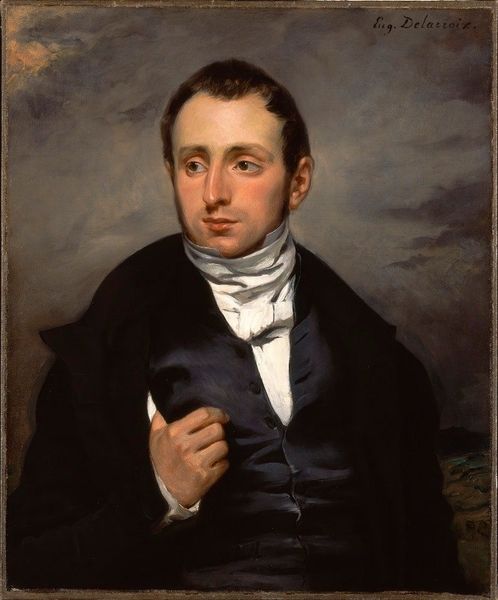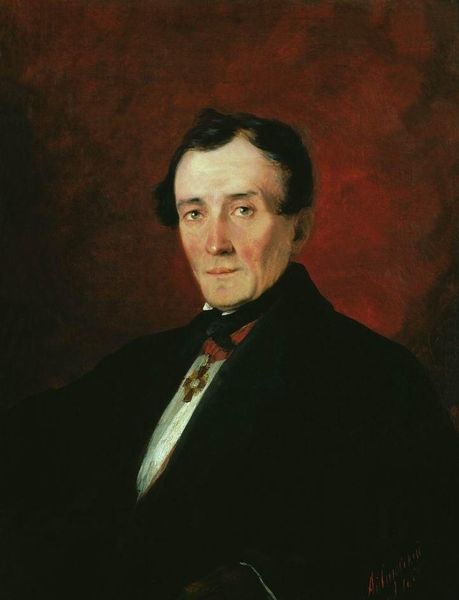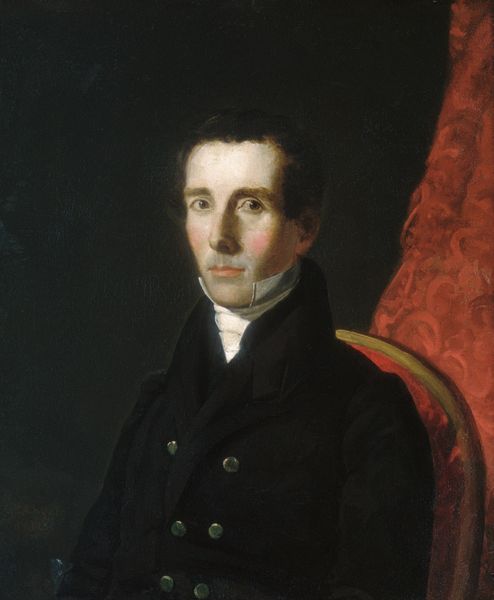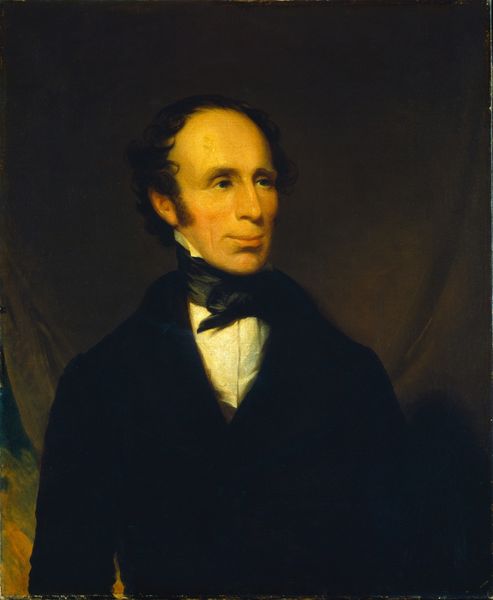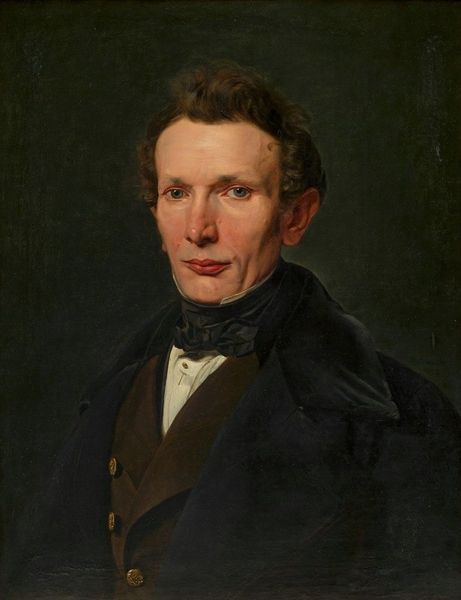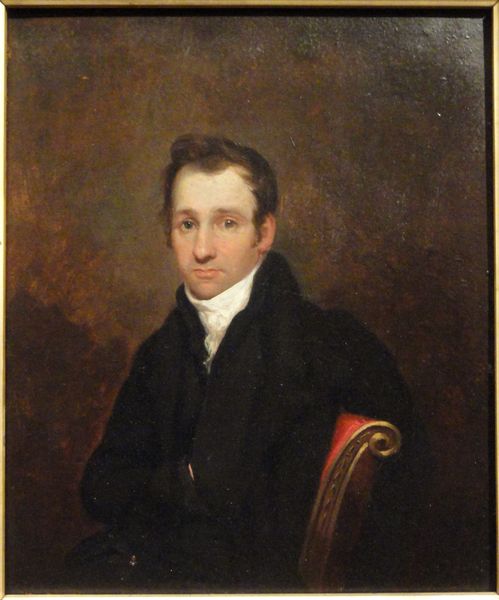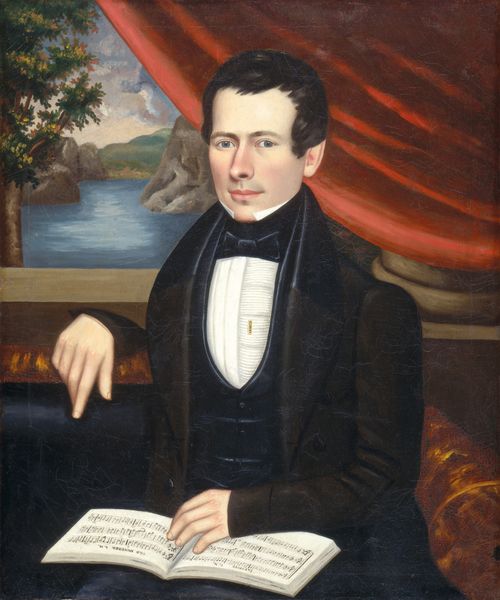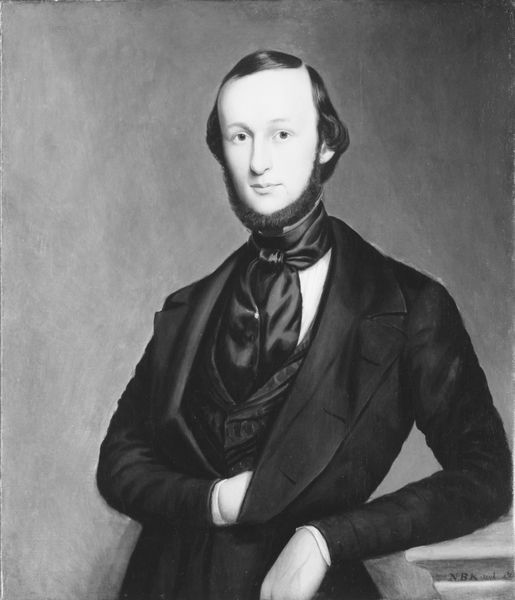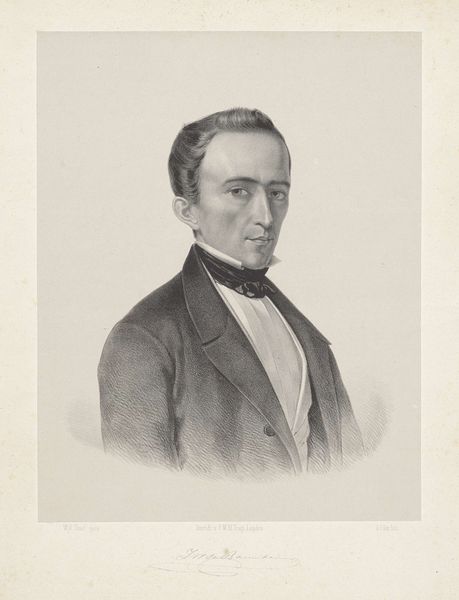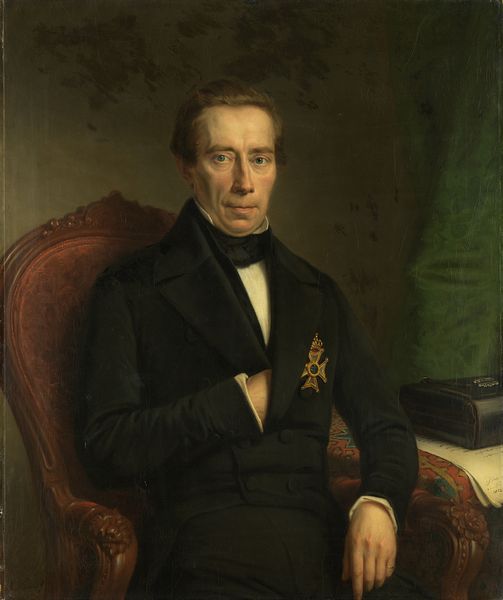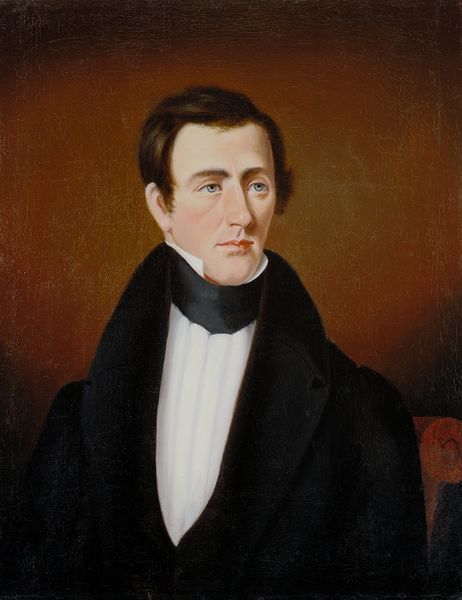
Copyright: Public Domain: Artvee
Thomas Sully painted this portrait of George Musgrave Giger with oil on canvas, a technique central to Western art for centuries. Although the work’s scale suggests a relatively quick execution, the reality is that even a portrait like this one involved considerable labor. The pigments would have been carefully ground, mixed with oil, and applied in layers to achieve the likeness and subtle gradations of tone. Sully’s skill as a painter, of course, was critical to the overall effect. But consider also Giger’s attire. His suit, crisp white shirt and silk bow tie speak to the rise of industrial textile production and global trade networks that made such garments increasingly accessible. The very fact that Giger could commission a portrait suggests a certain level of economic privilege, supported by the labor of others involved in making and marketing both art and fashion. Recognizing these material dimensions enriches our understanding of the painting and its historical context.
Comments
No comments
Be the first to comment and join the conversation on the ultimate creative platform.
